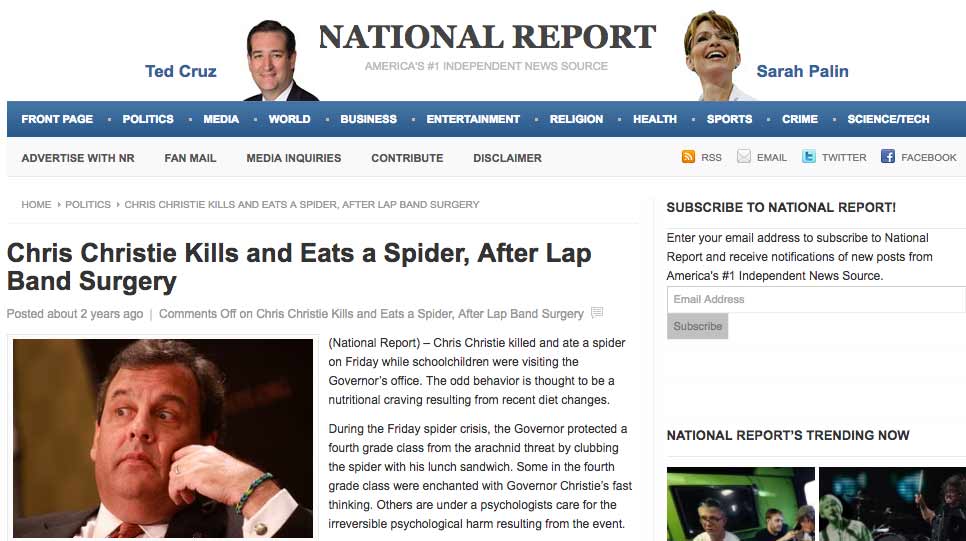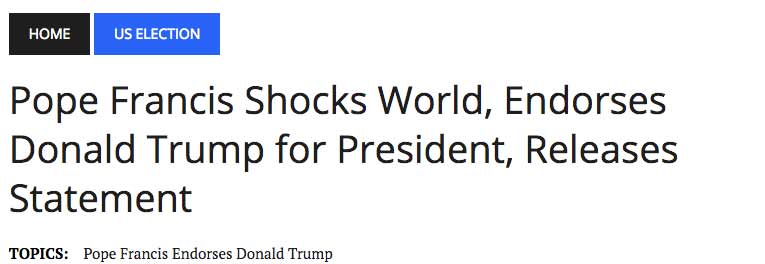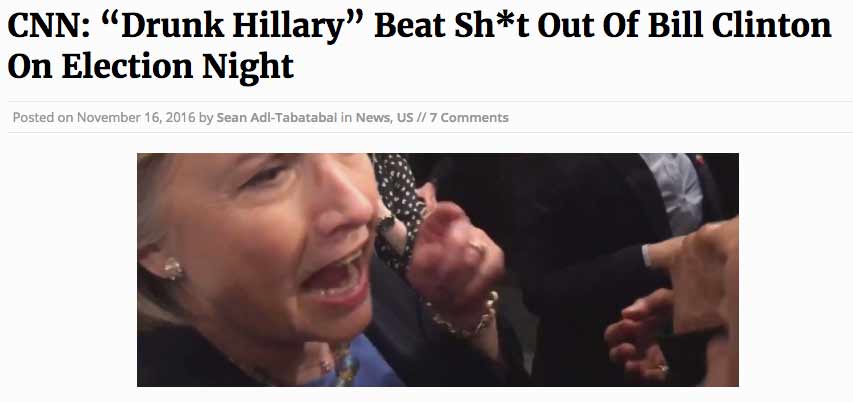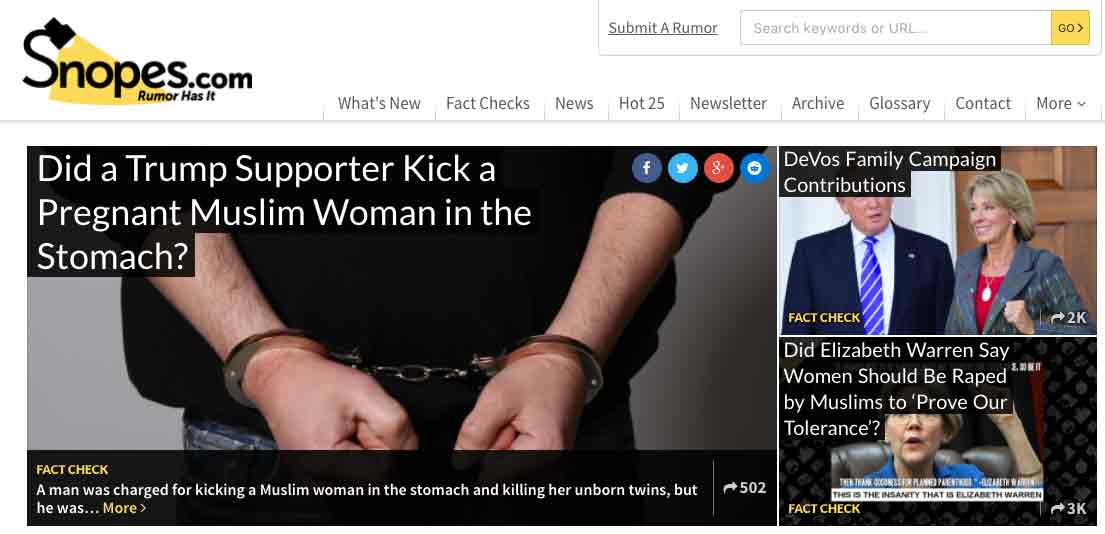Fact-Checking Fake News Today
Has any phrase been more divisive and frustrating during the election cycle and current federal administration than “fake news”? Seemingly innocent in its phrasing, the term has come to stand for entirely more than just a story with false facts.
Fake news—who makes it, who reads it, who believes it, and who profits from it—are all increasingly important topics in modern society, so much so that it now seems Americans live in two separate, competing realities.
In today’s stringently bipartisan media, supporters on both sides have no problem decrying the other for producing “fake” news or news ungrounded in verified facts. Careers have been built and sustained by fake news, from the Obama birther conspiracy to unsubstantiated claims of voter fraud. With the rising power of “alternative truths,” fake news seems destined to remain relevant to internet users and media consumers everywhere. So how do you get the facts, and how do you know them when you see them?
Fake news examples: Where does fake news live?
Fake news isn’t new. False information has always abounded but hasn’t always held so much sway over public policy. Fake news can be broken down into several distinct types, all of which appeared at some point in 2016’s election cycle and are bound to come up more frequently moving forward.
Fake news sites
Take a look at some of the fake stories that have gone viral, and you’ll notice that many of them have one major thing in common: the news sites they’re coming from are also fake. Just like spam emails, news stories from fake sites may look real on a superficial level, but their content is anything but legitimate. During the last three months of the presidential campaign, engagement with fake news sites skyrocketed, surpassing engagement with legitimate media.
According to a report by NPR, a single city in Macedonia was the home to more than 100 fake new sites. When asked, the owners said the primary driver was profits. In other words, people consumed fake news and, in return, provided click traffic for advertising. To the unscrupulous, this method of commerce is an easy win.
Imposter sites
The difference between broadly categorized fake news sites and imposter sites is that imposter sites take the extra step of trying to appear legitimate. Anyone who looks closely would know that “abc.com.co” is not the same as abc.com, but those who believe it often aren’t the ones looking closely.
Real content, wrong context
A picture can say a thousand words, and with fake news, those words can be anything you want. One popular video from the election cycle infuriated Trump supporters by showing ballot box stuffing in an American voting facility. The problem? The video was taken in Russia.
Fake information
Anyone can make up a fact, attach it to a graphic, and spread it around. Despite a lack of grounding, these memes can—and do—disseminate quickly. They’re easily digestible, easily shareable, and have often gone viral long before they’re disproven.
Some sites even have a disclaimer about their fake news though…
Manipulated content
Those all across the political spectrum were quick to accuse others of manipulating images that showed the crowd size at Trump’s inauguration. Trump supporters (and Trump himself) claimed that the sparse crowds were a result of liberal tampering, while non-supporters claimed Trump and his team manipulated images to appear that more people attended than really did. Who’s telling the truth? It all depends on what side you’re on.
Dark PR agencies
There are entire agencies committed to the darker methods of public relations, and they’re not always state actors. This article goes into more detail about them.
Why fake news matters
Fake news serves a very distinct purpose—to contribute to an agenda that otherwise has no backing. For example, the viral (and completely fake) story of the Pope voicing support for Trump was intended to lend more legitimacy to Trump’s campaign and bring Catholics on board.
In another example, there was a widely-shared meme that looked to be from Hillary Clinton’s campaign, purporting that you could vote by text from the comfort of your own home. This was intended to keep Clinton supporters away from the polls.
Silly as these attempts are, they spread misinformation and, in the case of fake election news, most likely convinced some people that certain falsehoods were true. Fake news matters because it serves as fuel to support ideas that otherwise have no standing. It’s also corrosive, taking away legitimacy from real news sites simply because people refuse to believe the story they don’t want to hear is the story that’s grounded in truth. It depletes the power of real facts, pandering to an infantile desire to hear what one wants to hear and block out the rest.
The fake news Facebook explosion: The role of social media
As fake news has become more pervasive, so too has the general understanding of the mischief it can cause. As a result, there have been widespread cries from the public for sites like Facebook and Twitter to do more to monitor the spread of misinformation.
Facebook in particular, received a lot of condemnation during the election cycle for allowing fake news to spread freely. Many Americans rely on Facebook as their primary media source, so it’s not an exaggeration to say that the site does real harm when it allows fake news to parade as real while infiltrating newsfeeds.
There are two distinct functions of social media as they pertain to fake news. There are personal accounts where users are free to post what they want no matter how ridiculous.
“32 percent got that news from social media”
These matter less than the media sites—real and fake—that also publish and share fake news. After all, if your Aunt Mary says three million people voted illegally, you’ll probably require a little more evidence before you believe her. And her reach probably isn’t that large anyway. If a news agency says it, though, providing false proof with a shiny veneer, algorithms will spread it to the people who most want to hear it.
A Washington Post-Schar School national poll found that, of the 30 percent of people who get their news primarily from the Internet, 32 percent got that news from social media. Algorithms, which dictate what content appears to you, divide up news such that fake stories go to the people who want to hear and believe them.
These stories tend to be provocative and eminently shareable, spreading madly in the face of a public that is hungry for further support for their worldview.
How to fact-check fake news
Fact-checking is an important part of media and a longstanding practice within good journalism. It’s necessary to attach integrity to a news story, assuring the reader that the writer, editor, and publication have done their due diligence in efforts to tell a true story.
Did a meth addict really eat a homeless man?
Fake news, however, puts the onus on the reader. So how do you know what’s real and what’s fake? There are a few things you can and should do to separate the truth from the fiction:
Consider the source
A lot of fake news comes from fake sites. You’ll have to go deeper than a Facebook post or a tweet to spot a fake site. Investigate the sources of links by searching the news agencies online, looking at their “About” pages, and looking at who else is sharing their content. Some sites are much easier to spot as fake than others, but Snopes keeps a handy running list of those that have been debunked.
Look past the headline
It’s easy to write a punchy headline appealing to a certain demographic, but if the facts aren’t there, there’s not going to be much substance behind it. If you see a headline that looks suspicious, click on it. What evidence is being used in support of its claim? The Obama birther rumors persisted for years without any actual proof because easily shareable snippets perpetuated the claim, not because it had facts to support it.
Investigate sources
Social media has given a voice to everybody, but it hasn’t bestowed legitimacy. If an article’s source is a Twitter handle instead of a real person, or it’s someone that has been vocally in support of other false claims, their bias and lack of standing will tell you something about the news item as a whole.
Check your own biases
If something sounds too good (or crazy or evil) to be true, it very likely might be. Be as willing to accept facts that go against what you want to hear as facts that support your beliefs. News shouldn’t feed your personal confirmation bias—it should tell us the truth about what’s going on.
Refer elsewhere
Sites like FactCheck.org, Snopes.com, PolitiFact.com, and the Washington Post Fact Checker often do the dirty work for you, investigating claims against their experts and sources and letting you know what you should believe and should ignore.
Learning how to fact-check what you read is going to be more important in the coming years. Always remain skeptical, and never assume fake news will self-destruct on its own. It’s up to those who honor truth to limit the power of fake news to rule the internet.
Fake news FAQs
What is fake news?
Fake news is information, especially in espionage or propaganda, disseminated as a response and opposition to other information.
What are the consequences of corporate fake news?
If your business is attacked by negative content agents, the possibilities are endless. You could find yourself in the same place as St. Mary’s, forced to cut employees and even shut down part of your business.
How do you know if you’re at risk of a fake news attack?
Here are just a few of the reasons someone might initiate a negative information attack against your business. You’ve recently experienced substantial company or financial growth. One or more of your employees does or says something controversial. A data breach occurs. Disgruntled customers come forward. Your business or employees expressly share their opinions on hot-button topics like politics or religion. You’ve done anything to provoke or anger a competing business.
Where does fake news live?
Fake news sites. Imposter sites. Real content, wrong context. Fake information. Manipulated content. Dark PR agencies.
How do you fact-check fake news?
Consider the source. Look past the headline. Investigate sources. Check your own biases. Refer elsewhere.
All trademarks, brands and copyright are the property of their respective owners.
About the author
Kent Campbell is the chief strategist for Reputation X, an award-winning reputation management agency based in California. Kent has over 15 years of experience with SEO reputation management, Wikipedia editing, review management, and strategy. Kent has helped celebrities, leaders, executives, and marketing professionals improve the way they are seen online. Kent writes about reputation, SEO, Wikipedia, and PR-related topics and is an expert witness for reputation-related legal matters. You can find Kent’s biography here.
–
Tags: Business Reputation Repair.






